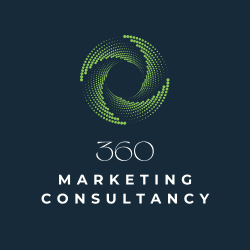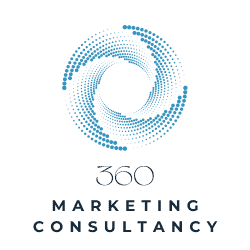Digital marketing involves the use of the internet and online technologies for the purposes of promoting company products and services. This has been facilitated because of electronic devices such as desktop computers, mobile phones, tablets etc. The beauty of digital marketing strategies is that it can be a cost-effective means to carry out your marketing efforts.

Need Digital Marketing Help?
Types of Digital Marketing
As we have said, digital marketing covers anything that is conducted online, using devices and channels to reach appropriate target audiences. But what specific activities fall under this category?
- Website development.
- Search engine optimisation (SEO).
- Influencers.
- Social media.
- Paid advertising.
- Ecommerce.
- Search engine marketing (SEM).
- Emails.
- Videos.
- Blogs.
One of the fundamental pillars of creating a robust strategy is to ensure that you have strong keyword research carried out. This will ensure that you have high quality content that effectively reflects the searches that prospects are looking for and interested in. This also helps search engines like google to understand and index this information.
In turn, it improves your credibility which in itself can rank you more favourably on the search engine results page. This is important for brand awareness as well as retaining your position within the market.
There are many assets and component parts that will inform your digital marketing strategy. In the following sections we will discuss:
- A Digital Marketing Campaign.
- Landing pages.
- Measuring your digital marketing strategy.
- Cost Per Acquisition.
- What is the average cost per acquisition by industry?
- Calculating your cost per acquisition rate.
- Conversion.
- Average conversion rate by industry.
- Calculating your conversion rate.
- Cost Per Acquisition.
What is a digital marketing campaign?
This is a marketing strategy that involves taking over all of your digital channels. Before using this strategy, you need to understand where your target audience is engaging with your brand. Is it your website, social media platforms, or a combination of both?
The design of your campaign will therefore take all of this into consideration. It will also be based on what you want to achieve from it. Do you need to build a pipeline of new sales leads? In which case, you can create a paid advertisement that will lead people to a dedicated landing page. The purpose of this will be to entice visitors to complete a contact form that will add them to your mailing list. This way you can continue to nurture the relationship with them.
In this respect, it requires viewing your strategy through an omni-channel lens in order to achieve optimum results.
What is a Landing Page?
Generally speaking a standalone landing page is where a visitor is specifically directed to while they are on your website. A person would click on a paid ad, a link in an email or another digital source. This brings them to a dedicated page where they have been encouraged to ‘land’.
There are two different types of landing pages. These are lead generation for data collection and click-through pages that will direct visitors towards the next predefined step.
Lead Generation Landing Pages
The purpose of these is to convert visiting traffic into qualified prospects. Data is an important resource in terms of building your audience and targeting them effectively.
Once the visitor is here, they are encouraged to sign up to a contact list or to buy something. Visitors are normally asked to provide their details by completing a form and these are stored on a database. This is an example of where a page has successfully converted visitors into prospects.
Click-Through Landing Pages
On the other hand, obvious calls-to-action (or CTAs) are the primary focus of these particular pages and they are more commonly used for e-commerce sites.
In this case, a user is prompted to click on a certain button that will redirect them to a page that will help them to carry out an intended action. For example, you might feature a button that ‘requests a demonstration’ and this will bring the visitor to a calendar and allow them to book a time.
Alternatively, there is an option to have a ‘buy now’ button that would link directly to your shopping cart page and therefore towards a purchase.
Measuring your Digital Marketing
There are lots of analytics that you can carry out on your site, social platforms and communications to understand how well you are doing. In order to keep it simple though, we will concentrate on two primary tools which are cost per acquisition and rate of conversion.
Cost per Acquisition (CPA)
In terms of measuring how successful your campaigns are, there are a number of indicators that will help you determine this. Cost per acquisition (CPA) or sometimes referred to cost per action will show how much you invested in your online advertising for an individual to take a definitive action or the cost to acquire a new customer. This action can be clicks, downloads, purchases or form submissions for example.
What is the average cost per acquisition by industry?
It’s hard to know if your cost per acquisition or action is good enough unless you are aware of what good looks like. Before doing this, it is important to remember that CPA is calculated on a range of factors such as:
- Length of sales cycle.
- The value of a purchase.
- How often a purchase is made.
- Customer lifetime.
- Company maturity.
According to Startup Talky, the average benchmarks can be applied to the following industries:
- Technology software, $395.
- Telecoms, $315.
- Banking or Insurance, $303.
- Real Estate, $213.
- Technology for hardware, $182.
- Financial, $175.
- Marketing agency, $141.
- Transport, $98.
- Manufacturing, $83.
- Consumer goods, $22.
- Retail, $10.
- Travel, $7.
Calculating your Cost Per Acquisition
In order to work out what your cost per acquisition is, you need to establish what your total marketing expenses are. These expenses can include salaries, commission, ad spend, a product or service trial for example.
This is divided by the number of customers that have been acquired over the corresponding period. So, if your marketing expenses come to €125,000 and you have gained 50 customers, then your CPA is €2,500.
Conversion Rate
In digital marketing, conversion is the process of transforming your potential customers into paying clients. A successful conversion will be determined by the objectives of your campaign but refers to when a user responds to a call-to-action. This can be from a digital asset such as a display ad or company owned media like an email.
The conversion includes, for example, clicks on a second link, document or asset downloads, sign ups for offers or newsletters, completing a contact form, booking a consultation, making a purchase etc.
Conversion rate is the percentage of users clicks/actions = conversion rates. Working out your conversion rate is very simple. You take the total conversions and divide this by the total number of individuals that have interacted with your content.
So, for example, your email campaign is sent out to a database of 1,000 people. Your results show that 50 recipients ‘clicked through’ to find out more.
Just like your cost per acquisition figure, it is useful to know how well you are performing within your own industry. Again, this can vary depending on what sector that you are in. Another point that needs to be made is that conversion rates are influenced by a range of factors such as cost of items, nature of business, source of traffic, what you define your conversion as.
According to the example below, professional services boast the highest conversion rate with 9.3% while B2B tech and Real Estate are the lowest performers with 1.7% (Ruler Analytics).
In general, a good conversion rate is somewhere between 2% and 5%. With positive conversion rates comes a greater return on investment. Therefore, it is always worth making sure that you conduct a regular check on how your digital assets, content and channels are performing so that you can adapt where necessary.
Digital marketing is clearly a vast area that covers a multitude of different things. With this information we hope to have simplified some of this process.




